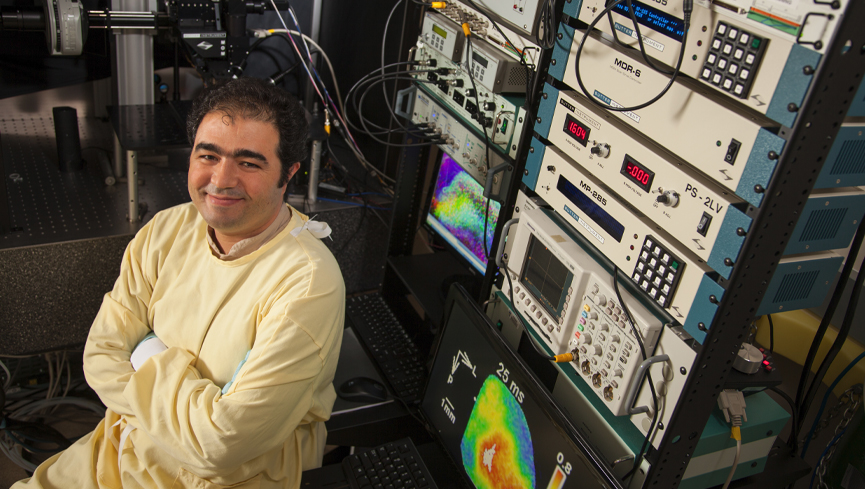The University of Lethbridge will receive nearly $1.5 million to create the Centre for Neuroengineering Solutions and nearly $870,000 to establish a work-integrated learning centre for Indigenous youth after the Government of Canada announced $11.2 million in funding for 18 projects in the Lethbridge region.
The Honourable Dan Vandal, Minister for PrairiesCan, announced the federal funding, including support for opening a new regional office in Lethbridge.
“The funding the University is receiving from PrairiesCan allows us to become even more connected to our community,” says Dr. Mike Mahon, ULethbridge president and vice-chancellor. “We are excited to increase the opportunities for Indigenous youth to engage in work-integrated learning. On top of that, the neuroengineering centre of excellence will further cement our partnerships and collaborations with local producers and industries.”
The Centre for Neuroengineering Solutions (CNS) is designed to facilitate turning inventions into innovations that solve real-world problems. Neuroengineering is a biomedical field that uses engineering techniques to create solutions to real-world problems.

“We plan to develop innovative technology solutions in animal research, animal health and the beef feedlot industry,” says Dr. Majid Mohajerani, a neuroscience professor at the Canadian Centre for Behavioural Neuroscience. “This hub will facilitate changing inventions into innovations that solve real-world problems and be a gateway for companies, engineers, scientists and trainees to collaborate at ULethbridge.”
The centre will create new positions and expertise in artificial intelligence, telecommunication, instrumentation and augmented reality. In addition, it will provide training for highly qualified personnel (HQP) and investment and manufacturing opportunities for small and medium enterprises (SMEs). The overarching goal is to bring new technologies to solve existing problems and provide HQPs with experience in artificial intelligence, sensors and instrumentation and the Internet of Things (IoT). IoT refers to the network of physical devices that have sensors and are connected to the internet, such as home security systems or autonomous farming equipment.
“We are developing new approaches for individual animal identification, tracking and monitoring health information at distances that are orders of magnitude farther than commercially available systems,” says Dr. Rob Sutherland, director of the Canadian Centre for Behavioural Neuroscience.
To create more work-integrated learning (WIL) opportunities for Indigenous youth, the University’s Career Bridge Centre for Work-Integrated Learning and Career Development will be enhanced through the addition of three positions to focus specifically on creating new learning opportunities for Indigenous students through the Niitsitapi program in WIL excellence. In addition, the funding will also be used to establish a program advisory committee to guide the development of these work-integrated learning opportunities.
“The focus of the Niitsitapi program within the Career Bridge Centre is to create a community of practice in WIL for Indigenous students, Indigenous industry and community partners and community organizations, and the University of Lethbridge,” says Stacey Gaudette-Sharp, academic director of Career Bridge. “The Niitsitapi program seeks to enhance educational and employment outcomes for students and strengthen relationships and recruitment opportunities with industry partners.”
